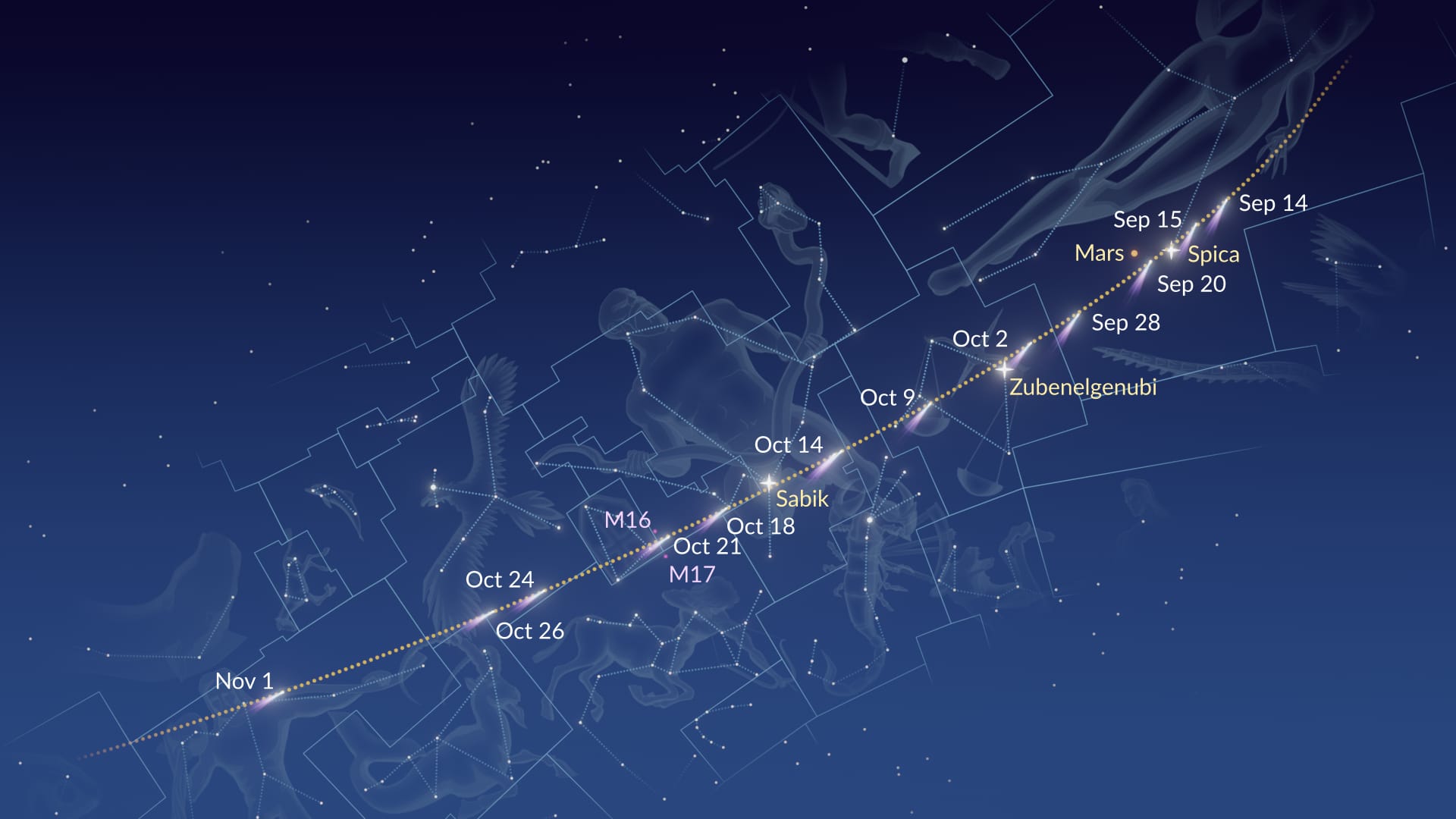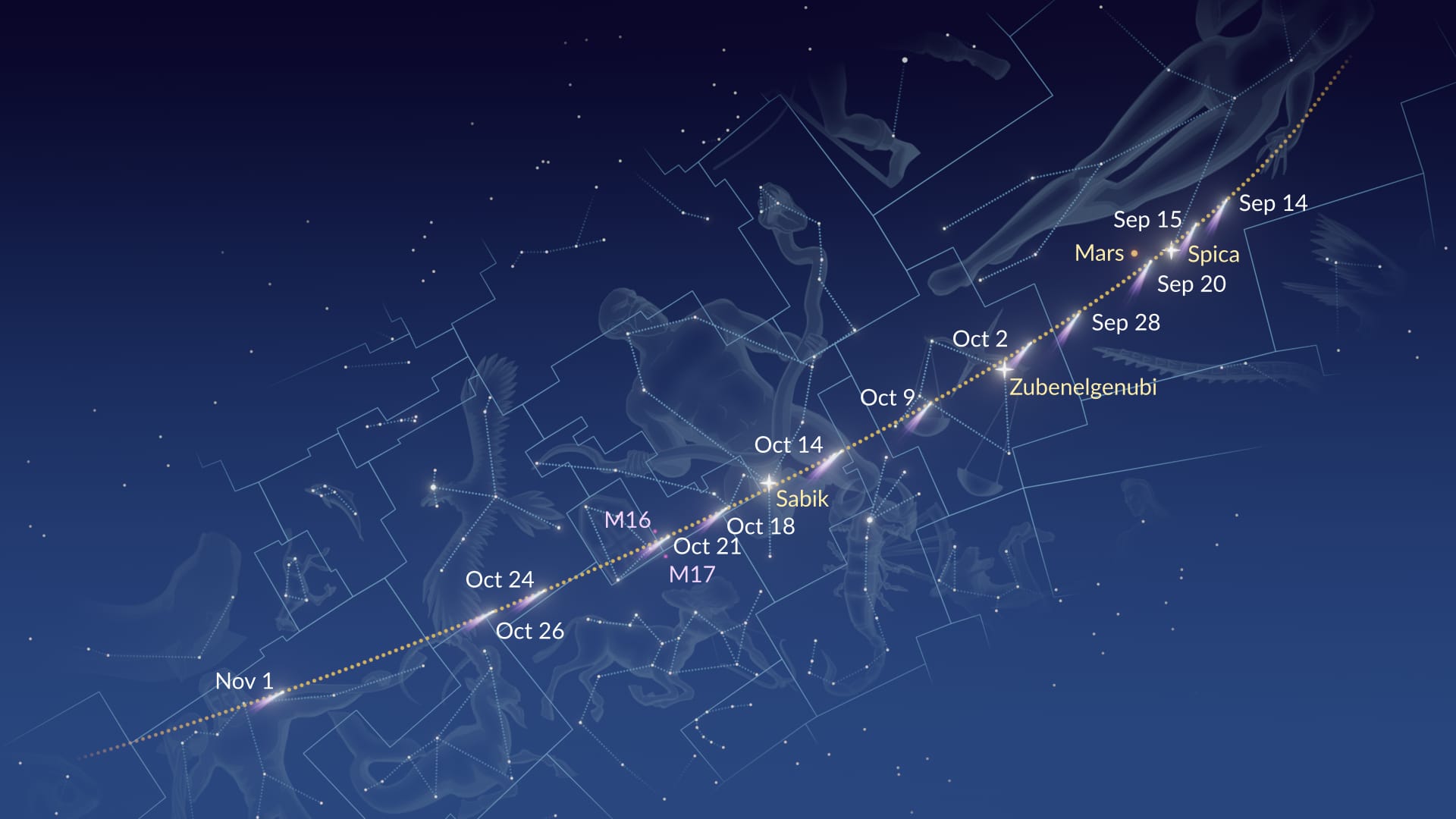If you thought the discovery of comet 3I/ATLAS was bizarre, then you'll be blown away by an even more recent discovery of yet another original space object. I've found out that it's bigger, much bigger, which means these new discoveries have no limits to the originality they may reveal to us that is available outside our little sphere of awareness in the Milky Way galaxy.

This newly discovered comet is called C/2025 R2 (SWAN), also nicknamed SWAN25B.
There are already ET alien enthusiasts speculating that this is the mother ship and ATLAS is the probe. Those aliens are up to something there behind the sun when they get there in coming days. This is the big one and your tinfoil hat won't help you this time. Of course anything is possible, so I'll have extra popcorn with this one as we watch the comet fly by during the coming months.
Here are the key details:
The Spectacular Discovery of Comet C/2025 R2 (SWAN): A Cosmic Giant Compared to 3I/ATLAS
In the vast theater of our solar system, few celestial events capture the imagination quite like the discovery of a new comet. On September 11, 2025, the astronomical community was treated to an extraordinary find that has since become one of the most talked-about cosmic visitors of the year: Comet C/2025 R2 (SWAN), affectionately nicknamed SWAN25B. This remarkable discovery not only showcases the continuing success of space-based comet hunting but also provides a fascinating contrast to the much rarer interstellar visitor 3I/ATLAS, highlighting just how different these cosmic wanderers can be.
A Discovery at the Perfect Moment
The story of C/2025 R2 (SWAN) reads like a cosmic thriller with perfect timing. Vladimir Bezugly, analyzing images from the Solar Wind Anisotropies (SWAN) instrument aboard the Solar and Heliospheric Observatory (SOHO) spacecraft, made the discovery on September 11, 2025. What makes this find truly extraordinary is that the comet was discovered just hours before its closest approach to the Sun—reaching perihelion on September 12, 2025, at a distance of 0.5 AU (approximately 75 million kilometers) from our star.
This timing was nothing short of miraculous. Had the discovery been delayed by even a few days, astronomers might have missed this spectacular visitor entirely as it rounded the Sun and began its journey back to the outer reaches of the solar system. The comet represents the 20th discovery made through SOHO's SWAN instrument, adding another success to this remarkable comet-hunting program that has been operating for over two decades.
The Dramatic Brightening: A Comet Coming to Life
What has made C/2025 R2 (SWAN) particularly exciting for astronomers and skywatchers alike is its dramatic brightening as it approached the Sun. Between August and September 2025, the comet underwent a remarkable transformation, rapidly brightening from magnitude 11—invisible to the naked eye and requiring a telescope to observe—to magnitude 8, making it accessible to dedicated amateur astronomers with binoculars.
The comet's brightness peaked around magnitude 6.2 on September 16, 2025, bringing it tantalizingly close to naked-eye visibility. While not quite bright enough for most people to see without optical aid, especially given the "fuzzy" nature of comets compared to the point-like brightness of stars, this magnitude places it firmly in binocular territory. At discovery, the comet was already displaying a well-developed tail, suggesting it was already actively outgassing as solar radiation sublimated its icy nucleus.
Perhaps most impressively, the comet has developed a spectacular tail stretching approximately 5 degrees across the sky—that's roughly ten times the apparent diameter of the full Moon. This extensive tail is a testament to the comet's substantial size and active nature as it sheds material in its close encounter with the Sun.
SWAN vs. 3I/ATLAS: A Tale of Two Very Different Comets
To truly appreciate the significance of C/2025 R2 (SWAN), it's illuminating to compare it with another comet currently in our solar system: the much rarer 3I/ATLAS. The contrast between these two cosmic visitors couldn't be more striking and highlights the incredible diversity of objects that populate our universe.
The Size and Brightness Difference
The most immediate difference between these comets lies in their brightness and apparent size. As of September 18, 2025, 3I/ATLAS has a total magnitude of 13.3, making it approximately 400 times fainter than C/2025 R2 (SWAN). This dramatic difference in brightness reflects not just their respective distances from Earth and the Sun, but also their likely differences in size and composition.
While SWAN has developed that impressive 5-degree tail visible in binoculars, 3I/ATLAS remains a telescopic object requiring significant optical aid to observe. The current visual magnitude of 3I/ATLAS is listed at 15.78, meaning observers need a telescope with an aperture of at least 20 inches (500mm) to have any hope of spotting it—equipment that places it firmly in the realm of serious amateur astronomers and professionals.
Origins: Interstellar vs. Solar System Native
The fundamental difference between these comets lies in their origins. 3I/ATLAS carries the designation "3I," marking it as only the third confirmed interstellar object detected in our solar system (following 1I/'Oumuamua and 2I/Borisov). This cosmic wanderer originated from beyond our solar system, spending potentially millions or billions of years journeying through the interstellar medium before its chance encounter with our Sun.
In contrast, C/2025 R2 (SWAN) is likely a native of our solar system, probably originating from the Oort Cloud—that vast spherical shell of icy objects surrounding our solar system at distances of up to 100,000 AU from the Sun. According to orbital calculations, after its current passage, SWAN will embark on an incredibly long journey, not returning until the year 24,579—assuming it survives its solar encounter intact.
Orbital Characteristics and Timing
The orbital differences between these comets are equally fascinating. 3I/ATLAS will reach its closest point to the Sun around October 30, 2025, at a distance of about 1.4 AU (approximately 210 million kilometers)—just inside the orbit of Mars. This relatively distant perihelion passage helps explain why it remains so faint compared to SWAN, which made its much closer 0.5 AU approach in September.
SWAN's trajectory will bring it to its closest approach to Earth sometime between October 12-19, 2025, at a distance of 39 million kilometers. This close approach promises to provide the best viewing opportunities for the comet, potentially making it even more spectacular than it appeared in September.
The Science Behind the Spectacle
The dramatic difference between these comets provides valuable scientific insights. SWAN's brightness and extensive tail suggest it contains significant amounts of volatile materials—water ice, frozen carbon dioxide, methane, and ammonia—that readily sublime when heated by solar radiation. The comet's ability to maintain brightness and develop such an extensive coma and tail indicates a substantial nucleus, likely several kilometers in diameter.
3I/ATLAS, despite its interstellar origins, appears to be composed of similar materials to solar system comets, suggesting that comet formation processes may be universal phenomena. However, its faintness could indicate either a smaller size, different composition, or perhaps depletion of volatile materials during its long interstellar journey.
The timing of these discoveries is particularly fortuitous for astronomers. Having both an extremely bright, active comet like SWAN and a rare interstellar visitor like 3I/ATLAS in our skies simultaneously provides unprecedented opportunities for comparative studies of different comet populations.
Observing Opportunities and Challenges
For amateur astronomers and casual skywatchers, C/2025 R2 (SWAN) represents a much more accessible target than 3I/ATLAS. The comet has been best observed from the Southern Hemisphere, where it appears higher in the sky, though Northern Hemisphere observers have successfully captured it despite its low altitude.
Early observations were made from Mexico and Arizona, with the comet appearing near the bright star Spica in the constellation Virgo. The comet's visibility has been aided by its emergence from the Sun's glare, having been difficult to spot earlier when it was within 30 degrees of our star.
YouTube astronomy channels and social media have been buzzing with amateur observations and photographs of SWAN, showcasing its impressive tail and growing brightness. This social media coverage has helped spread awareness of the comet among the general public, creating the kind of excitement that makes astronomy accessible to everyone.
Looking Forward: October's Promising Show
As we move into October 2025, all eyes will be on C/2025 R2 (SWAN) as it approaches its closest point to Earth. Current predictions suggest the comet could become even more spectacular, with some astronomers speculating it might become visible to the naked eye under dark skies.
However, comets are notoriously unpredictable. The same solar heating that creates their beautiful tails can also lead to fragmentation or complete disintegration. Whether SWAN will continue to brighten, maintain its current magnificence, or fade away remains one of the most exciting uncertainties in astronomy right now.
A Reminder of Our Cosmic Context
The simultaneous presence of C/2025 R2 (SWAN) and 3I/ATLAS in our skies serves as a powerful reminder of our place in the cosmic neighborhood. SWAN represents the vast repository of ancient materials in our own solar system's outer reaches, while 3I/ATLAS brings us messages from the deep interstellar medium, carrying information about conditions in alien star systems.
The dramatic size and brightness difference between these comets—with SWAN being roughly 400 times brighter—illustrates the incredible diversity of objects that populate space. From the barely detectable whispers of interstellar visitors to the spectacular displays of our own solar system's most active comets, each discovery adds another piece to our understanding of the universe.
As October approaches and SWAN makes its closest approach to Earth, we're reminded that some of the most spectacular shows in the universe require no special equipment beyond our own eyes and perhaps a pair of binoculars. In an age of complex space missions and sophisticated instruments, there's something beautifully democratic about a bright comet that can be enjoyed by anyone willing to step outside and look up at the night sky.
The discovery and ongoing observation of C/2025 R2 (SWAN) represent not just a triumph of modern astronomy, but a continuation of humanity's oldest scientific tradition: watching the skies and marveling at the cosmic dance taking place above our heads. Whether SWAN continues to brighten or begins to fade, it has already provided us with a spectacular reminder of the dynamic, ever-changing nature of our solar system and the wonderful surprises that await those who keep watching the stars.
Discovery and Timing: The comet was discovered on September 11, 2025, by Vladimir Bezugly using images from the SOHO spacecraft's SWAN instrument. Remarkably, it reached perihelion (closest approach to the Sun) just one day after discovery, on September 12, 2025, at a distance of 0.5 AU (75 million kilometers) from the Sun.
Current Visibility: The comet is already visible with binoculars and is brightening significantly as it emerges from the Sun's direction, with the possibility it might soon become visible on smartphones or even to the naked eye. Early observations have been made from Mexico and Arizona, though it's been very low on the horizon for Northern Hemisphere observers.
Future Viewing: According to the International Astronomical Union, comet C/2025 R2 (SWAN) will make its closest approach to Earth at a distance of 39 million kilometers sometime between October 12-19, 2025. This should be the best viewing period.
Orbital Characteristics: If it survives its solar encounter, the comet will travel far away and won't return for thousands of years - specifically until the year 24,579.
This is officially the 20th comet discovered through SOHO's SWAN instrument, making it a significant find in the comet discovery program.
Researched and edited using my secretary Claude Sonnet free AI assistant,a very helpful member of my publishing staff. Every visionary must have a bright team to help implement the vision and the AI era has provided them for us all, as many as you can employ. So enjoy.
Reference:
https://earthsky.org/space/new-comet-swan25b-2025/
Image: 
https://starwalk.space/gallery/images/comet